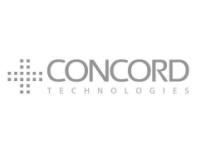Cybersecurity training and certifications.
Role-based content to prepare for exams, certifications, or to train your entire workforce.
YOU'RE IN GOOD COMPANY
Fortune 500 companies trust Infosec





FOR INDIVIDUALS
Upskill and get certified
-
Brain
Skill up
Upskill with unlimited access to 1,400+ hands-on cybersecurity courses and cyber ranges.
-
Certificate
Get certified
Upgrade to a boot camp for live, instructor-led training guaranteed to get you certified on your first attempt.
-
Thumbs Up
7-day free trial
190+ pre-built learning paths mapped to industry standards and the NICE Workforce Framework for Cybersecurity
Recommended for individuals
Cybersecurity beginners toggle item
Information Risk Analyst toggle item
Privacy Manager toggle item
Security Manager toggle item
Award-winning training you can trust




FOR ORGANIZATIONS
Build employee awareness
-
City
Business
From security awareness and training for accounting to secure coding training for engineering, we have the right security education you need to achieve your business objectives — when you need it.
-
Military
Government & Contractors
Meet DoD 8570/8140 requirements with training built for federal teams and contractors while staying under your Government Purchase Card limit with volume discounts.
-
Repair
MSPs & Resellers
A great partner deserves a great partner. From security awareness to phish sims to hands-on technical training, we have the right security education to protect both your clients and your organization.
Recommended for organizations
Security awareness toggle item
Phishing simulations toggle item
Reports assessments toggle item
Program automation toggle item
Our latest news
What our clients say
“Infosec Skills is a very good place for building technical acumen and engineering development knowledge. It enables us to provide training to the entire team on relevant topics.”
Romy Ricafort
West Division Senior Director of Sales Engineering

Free tools and resources
-
phishing
Phishing Risk Test
How vulnerable is your organization to phishing attacks? Run a free Phishing Risk Test to find out.
-
calculator
ROI calculator
How do the benefits of security awareness training compare to the costs and time requirements?
-
secure group
Training plans
Running an effective and engaging security awareness program doesn't have to be hard.
-
target
Buyer's guide
Download our free security awareness and training buyer's guide to select the right training platform for your organization.
Get started
Request a demo
Tell us a little bit about yourself and then pick a time that works best for your schedule.
7-day free trial
Try Infosec Skills and get access to 190+ pre-built learning paths mapped to industry standards.
Build awareness
Empower employees with knowledge and skills to stay cyber secure at work and home with 2,000+ security awareness resources.





























